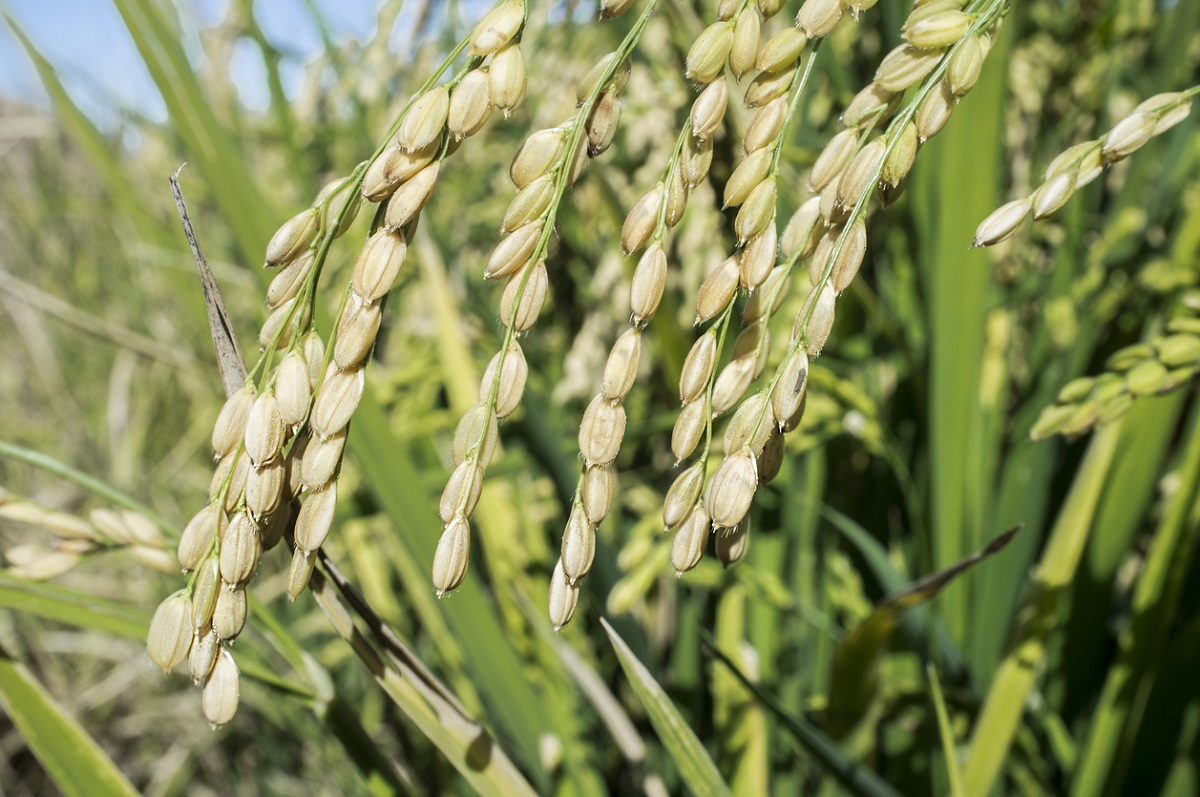
CRISPR-Cas9 Elucidates Seed Shattering Reduction during Rice Domestication
September 16, 2020| |
Researchers from the National Agricultural and Food Research Organization in Japan reported a mutation in OsSh1 causing non-shattering in a rice mutant cultivar using whole-genome resequencing. The results are published in Scientific Reports.
Loss of seed shattering has been identified as a vital step during crop domestication. ‘Minamiyutaka', a non-shattering type of rice, was developed from the easy-shattering type ‘Moretsu' by mutation breeding via gamma-ray irradiation. The researchers observed significant alterations in shattering habit, breaking tensile strength, and abscission zone structure between ‘Moretsu' and ‘Minamiyutaka'. Based on the whole-genome mutation analysis of ‘Minamiyutaka', there was a 13-bp deletion causing defective splicing in exon 3 of the OsSh1 gene which has previously been referred to as a candidate for controlling seed shattering.
Using CRISPR-Cas9, the researchers showed that loss-of-function mutation in OsSh1 causes non-shattering in rice. Further analysis using wild rice accessions revealed that OsSh1 has been under strong selection during rice domestication, and a missense mutation might have led to the decrease in seed shattering from the wild progenitors to cultivated rice.
Read the research article in Nature.
| |
You might also like:
- CRISPR-Cas9 Speeds Up Domestication of African Rice Landraces
- CRISPR-Cas9 Genome Editing in Polyploid Oilseed Rape
- Pocket K No. 54: Plant Breeding Innovation: CRISPR-Cas9
Biotech Updates is a weekly newsletter of ISAAA, a not-for-profit organization. It is distributed for free to over 22,000 subscribers worldwide to inform them about the key developments in biosciences, especially in biotechnology. Your support will help us in our mission to feed the world with knowledge. You can help by donating as little as $10.
-
See more articles:
-
News from Around the World
- ANU Book Presents Stories of Communicating Science in 39 Countries
- FAO Reports Lack of Progress in Achieving SDG
- Research Reveals New Insights to Advance Cassava Breeding
- Massive-scale Genomic Study of Almost 80,000 Accessions Reveals Wheat Diversity
- Gene Editing Produces Livestock ‘Surrogate Sires' Successfully Made Fertile
- PH Government Grants GM Corn Seeds, Farm Inputs to Farmers Association's Model Farm
- Research Team Lays Foundation for Crops with Resistance to Combined Climatic Stresses
-
Research Highlights
- cry1Ab Transgene Segregation Patterns of GM Maize Documented
-
Plant
- Research Pinpoints GDSL Esterase/Lipase Protein Vital for Anther and Pollen Development
- CRISPR-Cas9 Elucidates Seed Shattering Reduction during Rice Domestication
-
Health
- Study Finds COVID-19 Virus Remains in Stool Samples
- Researchers Discover SARS-CoV-2 Uses Heparan Sulfate to Get Inside Cells
-
Read the latest: - Biotech Updates (December 17, 2025)
- Gene Editing Supplement (December 17, 2025)
- Gene Drive Supplement (February 22, 2023)
-
Subscribe to BU: - Share
- Tweet

